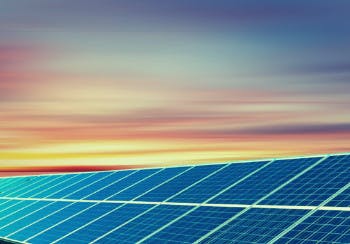The Pros and Cons of Using a Grid-Tie Solar Power System
How Grid-Tie Can Save your Company Money from Day 1
Blog Articles from Relax Solar South Africa
Solar Power, Solar Panels, Batteries, Grid-tie, energy saving, grid-tie solar power
Solar power is an increasing trend that you should consider if your company requires large amounts of electricity.
A grid-tie system will help with saving money on monthly electric bills and providing cleaner energy, and it may be the most ideal choice for business owners who need high demand at intermittent times during the day.

Solar Systems can produce both clean (solar) renewable resources as well as provide base load capacity . To determine whether this type off Solar Cell System would work best see our article here. Here we'll explore the pros and cons of using a grid-tie solar power system in your business.
The technology uses solar panels to generate electricity and then uses Eskom power to supplement the power at night, during excessive power usage or during lower solar days.
Eskom power is used at night, when the sun isn't shining. This is a great way to help reduce your carbon footprint, while at the same time reducing your electric bill, and starting your investment into solar power, without an excessive capital outlay.

How does this work?
A grid-tie solar power system is comprised of two parts. The first part is the solar panel. It is usually placed on your roof or on a platform in a sunny location. First, the solar panels collect energy from sunlight. The second part of a grid-tie system is an inverter that connects to your home's electrical panel and converts the electric current from the solar panels into direct current (DC) so it can be fed back into the electrical grid.
When you need energy during the day, the solar panel, with the help of an inverter will supply it to your home. Should your home or business need more power than the panels can provide, smart electrical circuitry will feed the balance of your power needs from your Eskom electrical grid, to ensure you stay up and running.
What are the advantages of using a grid-tie solar power system?
One of the main benefits of using a grid-tie system is the fact that you don't have to install the panels yourself. Installing the panels can be difficult and expensive. With a grid-tie system, all you have to do is purchase the system from a local retailer, who will will install them for you. This can save you a lot of money, as well as time. In addition, the panels are designed to withstand a lot of abuse. This is important if you live in an area that experiences hail. Another benefit is that this type of solar system allows you to grow your system, as your budget allows. You simply add solar panels as you need and the system will reduce the amount of Eskom power it uses, as your amount of solar panels increases. Thus you can slowly wean yourself off of Eskom, thus reducing your monthly power bill as you go.
What are the disadvantages of using a grid-tie power system?
There are a couple of disadvantages to using a grid-tie system. The first disadvantage is the fact that the solar panels are expensive. The price of the panels varies from place to place. If you live in a cold climate, you may want to consider purchasing a different brand of panel. Some brands are more expensive than others. Another disadvantage is that the panels are heavy. If you live in an apartment building, you may have trouble moving the panels around. It is essential to make use of a reputable solar installer to ensure an installation that will last you decades.
A pure grid-tie solutions is also still subjected to the effects of load-shedding , or down time by your electrical grid provider. As they go down, your system will go down. This is due to the fact that a grid tie system needs to see an electrical grid, to keep the solar panels feeding the system.
Thankfully this can be overcome by asking your solar supplier to provide you with a hybrid solution, which will ensure you can have power day or night, even if your electrical provider goes down intermittently.

How much can I expect to pay for a grid-tie solar power installation?
The cost of installing a grid-tie system will depend on the size of the system. The larger the system, the more expensive it will be. However, if you plan to use the system for a long time, the cost will be worth it. The good news is that the cost of the system is usually paid back in about 5 years. That means that in five years you will have saved a lot of money. On average, a grid-tie solution will cost you around R12 -R18 per watt, installed price, in South Africa. Thankfully, financial solutions have recently opened at Relax Solar, to assist home-owners with regular incomes to be able to purchase these systems on a monthly payment scheme, that are similar to the current rate that most home owners are paying for their existing Eskom monthly bill.
How to find out more about a grid-tie solar power installation?
If you would like to find out how much your home will cost on a grid tie system, and you are currently able to afford your existing Eskom bill in South Africa, click on the button below to book a call to discuss your needs with us today.
Related
Reload
Reload
Reload
Let us know your comments below